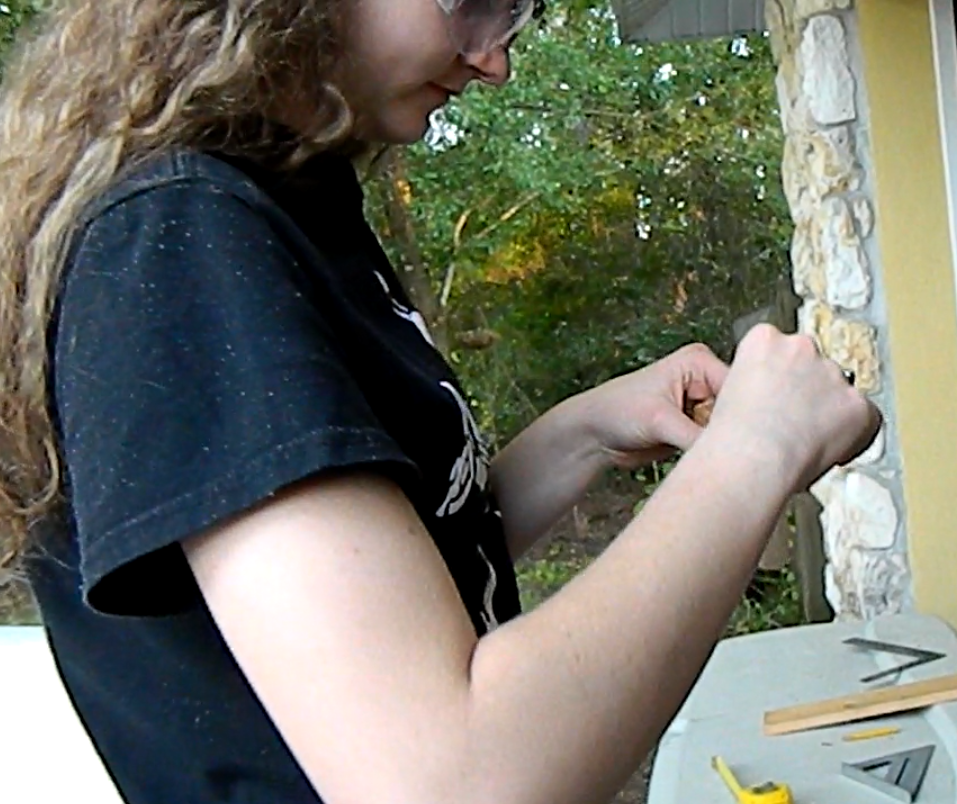(The material in question)
J&E Catapult
Thursday, May 23, 2013
The catapult's base is 36 in. long, and when standing, the arm is just under 6 ft. It's constructed from mostly recycled wood and iron weights (the counterbalance) borrowed from a neighbor. The arm is attached to the base (when loaded, as shown) using a dowel rod which, when pulled, serves as a trigger. On the opposite side of the trebuchet under the weights, extra wood was added to better support it and prevent it from capsizing after the launch. The sling itself is made from a foam-like material commonly used to prevent rugs from slipping on a smooth surface. While this material would induce friction with the slide board, it also serves to grip the balloon. The sling has two triangles cut out of the side so that it creates a cup shape rather than a rectangle which would better hold the water balloon.
Meetings
Date
|
Work
Accomplished
|
Members
Present
|
5/13
|
In
the computer lab we worked on researching the physics aspects behind the
trebuchet and created a blog.
|
Jackie
& Emily
|
5/15
|
We
met to go over designs and begin gathering materials. We found scrap
materials at Jackie’s Grandparents’ house and in Emily’s garage. We began
cutting wood on this day.
|
Jackie
& Emily
|
5/16
|
We
actually started constructing the trebuchet and cut wood as needed. We built
up to the towers.
|
Jackie
& Emily
|
5/18
|
Emily
finished construction of the trebuchet as Jackie was out of town. Some trials
were launched and adjustments to the counterweight were made.
|
Emily
|
5/19
|
We
met up to film the three trials needed. To reduce friction, we tried using a
different, silkier material for the sling, but after no improvement was
reached, we returned to the previous material. The trials averaged a distance
of around 37 feet.
|
Jackie
& Emily
|
This is a log of the times Jackie and Emily worked together on this project. The meetings lasted for several hours for the construction part of building the trebuchet.
Subscribe to:
Comments (Atom)


.JPG)
.JPG)
.JPG)





.JPG)



.JPG)